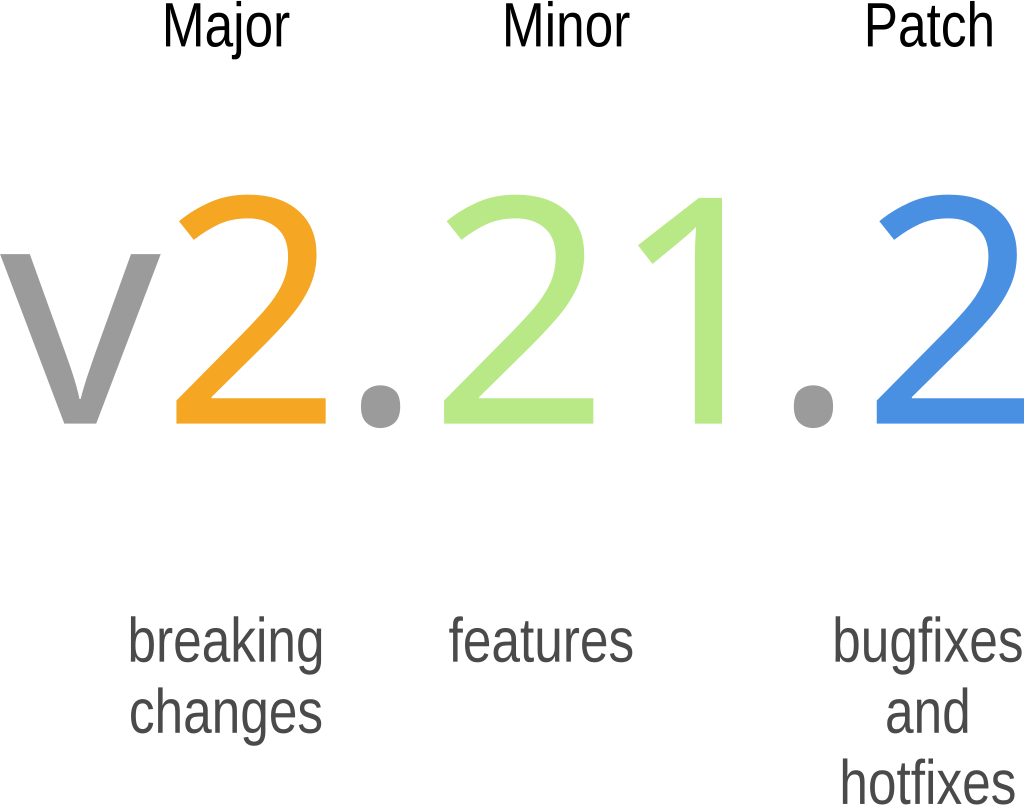Pre-requisites
- GitLab Account
- GitHub Account
Objectives
Create a CI/CD pipeline to automate versioning and CHANGELOG file generation
Example
- https://gitlab.com/neiroc/versioning-changelog
- https://github.com/emarchel/automatic-versioning-changelog
Understanding Semantic Versioning (SemVer)
Semantic Versioning (SemVer) is a versioning scheme for software that uses a three-part number format: MAJOR.MINOR.PATCH (e.g., 1.2.3). This approach helps developers and users understand the impact of new releases at a glance.
The format for SemVer is:
- MAJOR: Increased when you make incompatible API changes.
- MINOR: Increased when you add functionality in a backward-compatible manner.
- PATCH: Increased when you make backward-compatible bug fixes.
For example, 1.0.0 might be the initial release, and future releases could look like:
1.1.0for a minor, backward-compatible feature addition.1.1.1for a bug fix that doesn’t affect the API.2.0.0for breaking changes.
Implementing automatic versioning and changelog generation
GitLab provides powerful CI/CD pipelines that can be leveraged to automate semantic versioning. You can use Git tags and GitLab CI/CD pipelines to automatically apply and increment version numbers as part of your release process.
GitLab - Automatic versioning
- Create
.gitlab-ci.ymlfile in a git repository
stages:
- release
release:
image: node:latest
stage: release
before_script:
- apt-get update && apt-get install -y --no-install-recommends git-core ca-certificates
- npm install -g semantic-release @semantic-release/gitlab @semantic-release/changelog conventional-changelog-conventionalcommits @semantic-release/commit-analyzer @semantic-release/git
script:
- semantic-release
only:
- master # change branch name if different
semantic-release is a tool used to automatically determine and apply the next version based on converional commits
-
Create a CI/CD variable with a Project Token
- Project Setting -> Access Token -> Add new token. (Scope
api) Check scope here - Project Setting -> CICD -> create a var named
GITLAB_TOKENand paste the token generetad in previous step
- Project Setting -> Access Token -> Add new token. (Scope
-
Create a file named
.releasercand paste the following code:
{
"branches": ["master"],
"plugins": [
"@semantic-release/commit-analyzer",
"@semantic-release/release-notes-generator",
"@semantic-release/changelog",
"@semantic-release/git",
[
"@semantic-release/gitlab",
{
"gitlabUrl": "https://gitlab.com"
}
]
]
}
NOTE. In .releaserc the order is important in order for plugins to work
✅ After running the pipeline a new git tag and a CHANGELOG.md file have been created !
GitHub - Automatic versioning
- Create
.github/worflows/release.ymlfile in a git repository
name: Release
"on":
push:
branches:
- main
permissions:
contents: read # for checkout
jobs:
release:
permissions:
contents: write # to be able to publish a GitHub release
issues: write # to be able to comment on released issues
pull-requests: write # to be able to comment on released pull requests
id-token: write # to enable use of OIDC for npm provenance
name: release
runs-on: ubuntu-latest
steps:
- uses: actions/checkout@eef61447b9ff4aafe5dcd4e0bbf5d482be7e7871 # v4.2.1
- uses: actions/setup-node@0a44ba7841725637a19e28fa30b79a866c81b0a6 # v4.0.4
with:
cache: npm
node-version: lts/*
- run: npm install -g semantic-release @semantic-release/github @semantic-release/changelog conventional-changelog-conventionalcommits @semantic-release/commit-analyzer @semantic-release/git
- run: semantic-release
env:
GITHUB_TOKEN: ${{ secrets.GITHUB_TOKEN }}
#NPM_TOKEN: ${{ secrets.SEMANTIC_RELEASE_BOT_NPM_TOKEN }}
At the start of each workflow job, GitHub automatically creates a unique GITHUB_TOKEN secret to use in your workflow. You can use the GITHUB_TOKEN to authenticate in the workflow job.
If you still want to create a GITHUB_TOKEN
-
Create a Personal Access Token (classic)
- Settings -> Developer Settings -> Personal access tokens (classic) named
GITUB_TOKEN
When creating the token, the minimum required scopes are:
repofor a private repositorypublic_repofor a public repository- Add secret to Project Setting
- Settings -> Developer Settings -> Personal access tokens (classic) named
-
Create a file named
.releasercand paste the following code:
{
"branches": ["main"],
"plugins": [
"@semantic-release/commit-analyzer",
"@semantic-release/release-notes-generator",
[
"@semantic-release/changelog",
{
"changelogFile": "CHANGELOG.md"
}
],
[
"@semantic-release/git",
{
"assets": ["CHANGELOG.md"]
}
],
[
"@semantic-release/github",
{
"githubUrl": "https://github.com"
}
]
]
}
NOTE. In .releaserc the order is important in order for plugins to work
✅ After running the pipeline a new git tag and a CHANGELOG.md file have been created !
